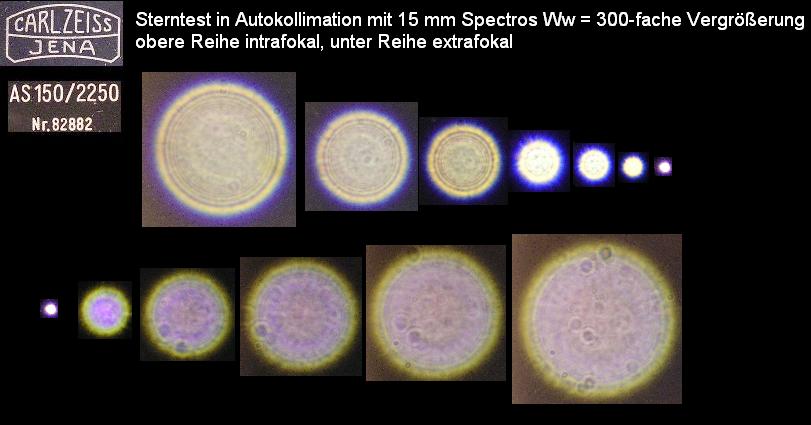B067 Zeiss AS-Objektive Übersichtstafel
Klassifizierung von Refraktor-Optiken über Farblängsfehler
Siehe auch diese Übersicht: http://www.astro-foren.de/showthread.php?t=7839

Folgender Auszug aus einer Information, wie man sie vor vielen Jahren von Lichtenknecker Optics als Qualitäts-
Kriterium für Refraktor-Optiken zugeschickt bekam. Diesen "RC-Wert" der für Rest-Chromasie bzw. sekundärem
Spektrum bzw. Farblängsfehler bzw. für die Farbreinheit eines Refraktor-Objektives steht wurde schon vor
Jahrzehnten als Qualitäts-Kriterium benutzt und hat heute erneut bei einer APO-Schwemme eine neue
Aktualität.
Augenblicklich verwenden wir einen neutralen "W-Wert", da der Algorhythmus, den Dieter Lichtenknecker ver-
wendete, nicht veröffentlicht wurde. Der W-Wert wird in Abhängigkeit von Öffnung und Brennweite ermittelt
und dient wie bei Lichtenknecker als Index-Zahl bzw. Unterscheidungs-Kritierium für die Güte der Farbreinheit
bzw. als Maßzahl für das sekundäre Spektrum bzw. Farblängsfehler bzw. Rest-Chromasie. Allerdings ist die
Grenze in unserem Falle schärfer zwischen Voll-APO, Halb-APO und Achromat, die bei Lichtenknecker in dieser
Klarheit noch nicht zu finden ist.


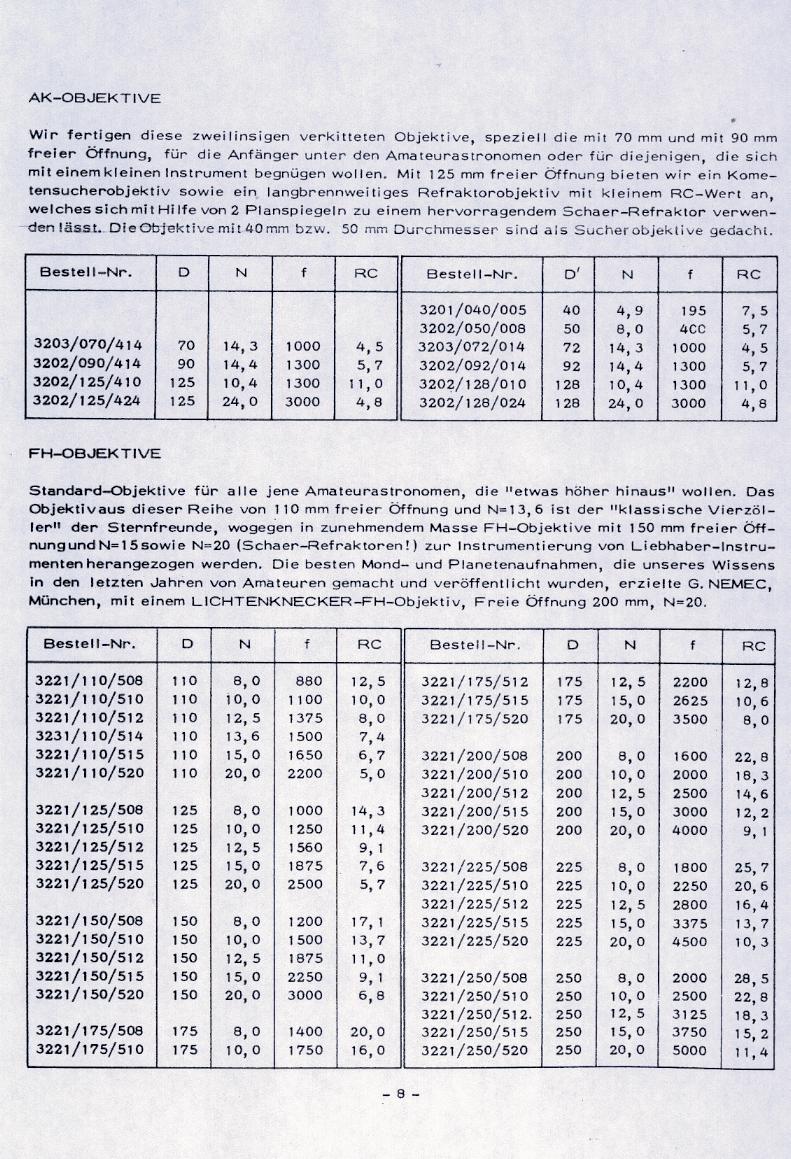
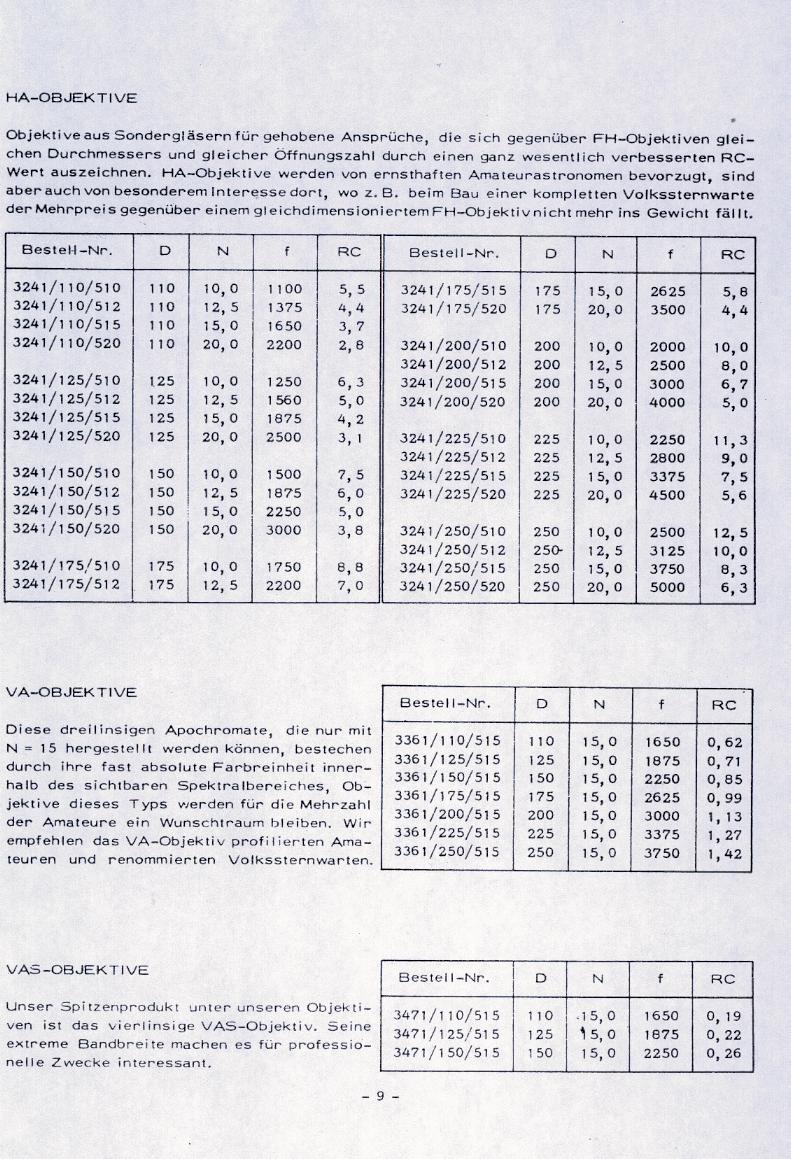
############################################################################
Dear Jim,
I just signed in at your yahoo group refractor, but I didnt find any thread of that, or is it at the CN-Board?
as I know Lichtenknecker did not produced immersions optics, just air spaced one and I dont know the types
of the glases, he used.

Lets translate me the German text:
I start on page 6:
Our objectivs of type AK are corrected for spherical aberration and secondary spectrum for two colors. By splitting the
inner radius of such objectiv we make the type FH (Fraunhofer-Objektiv). This additional way of correcting we use for
reducing of coma paraxial. A FH-objectiv from special glases, which allow to reduce the RC-value, we call them HA-
objectivs. The VA-Objectiv is a classic apochromat, thesecondary spectrum is corrected for three colors, our special
interest was layed on the full visible spectrum. Spherical aberration and paraxial coma are corrected for the middle
spectrum. The VAS-Objectiv finally has four waves in one focus, one of it in IR and one in UV. The spherical aberration is
corrected for visual use and in UV (corrected GAuss error), the paraxial coma corrected in the visual spectrum and extremly low in the other parts.
This is not an information for an optical designer, its just for advertisement. The most important thing: Lichtenknecker
used the secondary spectrum as an argument for his quality and we can measure the scondary spectrum very exactly
and give you an Index value for that.
I hope, I could help you.
Today Im thinking about the problem, how one can test the field in the focus by the Bath-Interferometer. Here I have
some questions to you about the way of testing that.
#############################################################################
Hello Jim,
thanks a lot for your replay. NOw let me explain: Have a look at first at that table. It shows different types of refractors
with the index numbers: 0-1 means an apochromat, 1-2 means half of an apochromat and 2 - ....15 is an achromat
objectiv.
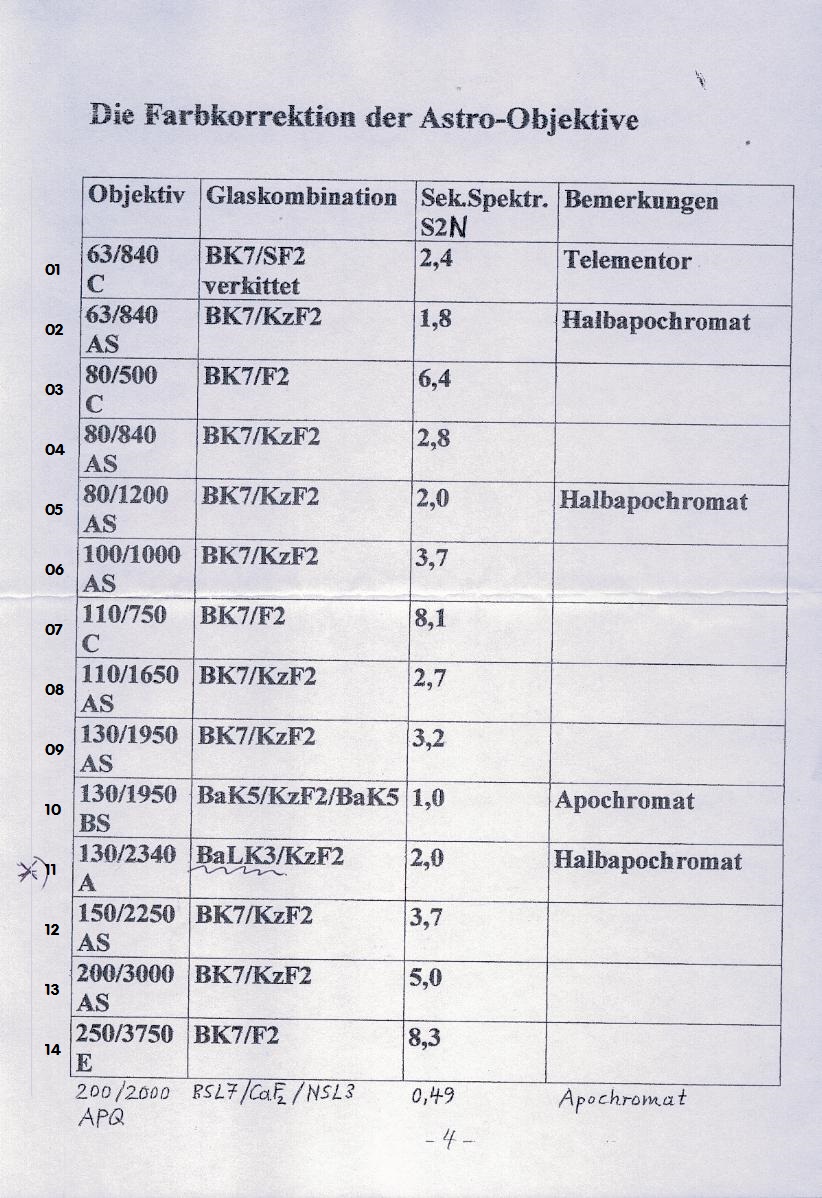
You can calculate this values, if you know the refraction indices of the glas types with the formula from Ernst Abbe, publishes in Rutten, Telescope Optics, 307 ff and in other publications, I use. But in this case you need the refraction indices of the different glases of an actual refractor objectiv.
Another way is the definition of Thomas Back:
Quote:
But any lens, be it a doublet, triplet, quad, air-spaced or Petzval, that has a peak visual null (~5550A - the green-yellow) with a Strehl ratio of .95 or better, coma corrected and is diffraction limited from C (red) to F (blue) with 1/4 wave OPD spherical or better, has good control of the violet g wavelength with no more than 1/2 wave OPD P-V spherical and optical spot sizes that concentrate the maximum amount of photons within the diffraction limit -- a result of the low spherical aberration, which can be seen with modern optical design programs, as the "spot rays" will be seen concentrated in the center of the spot, not evenly or worse, concentrated outside the center -- will satisfy the modern definition of "Apochromatism."
You can get fringes maps like this one and calculate the optical path different (ODP) by the power of the fringes,
look at the last four fringes maps, or my way ...
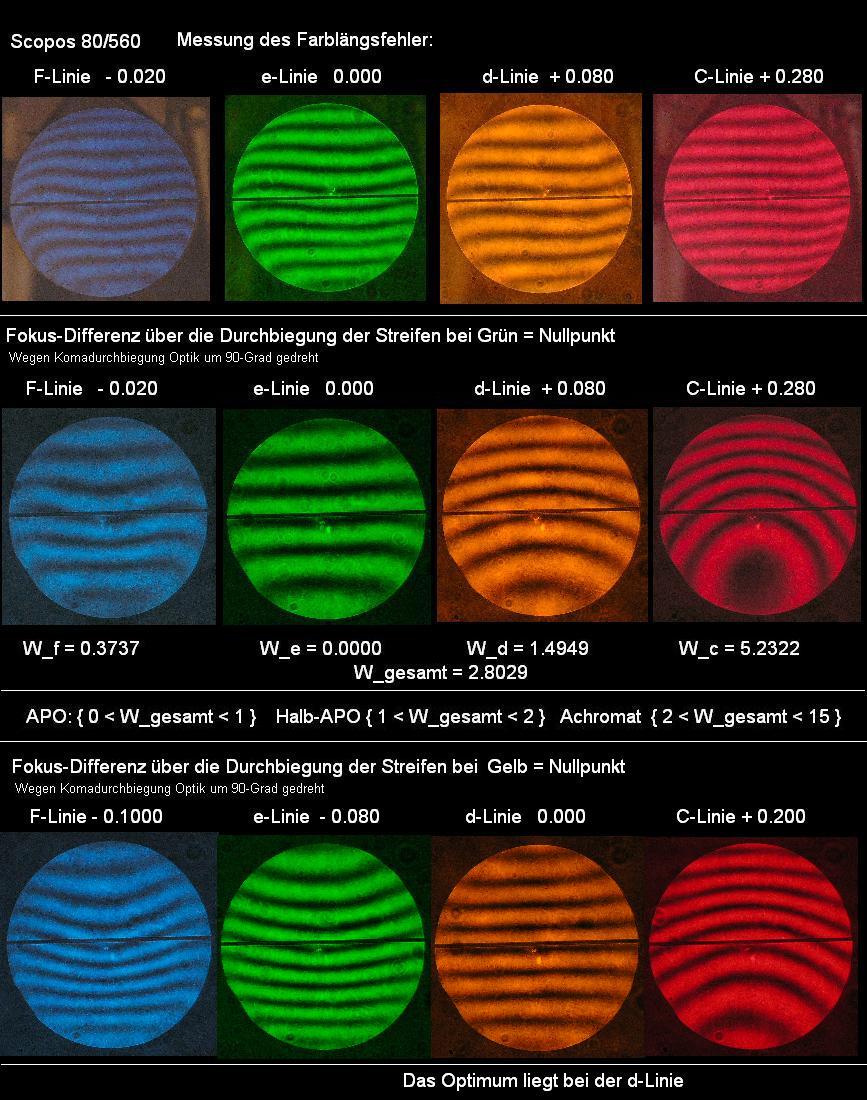
your get the values with this in the 0.707 zone of a refractor objectiv, look at the first line of the table before.
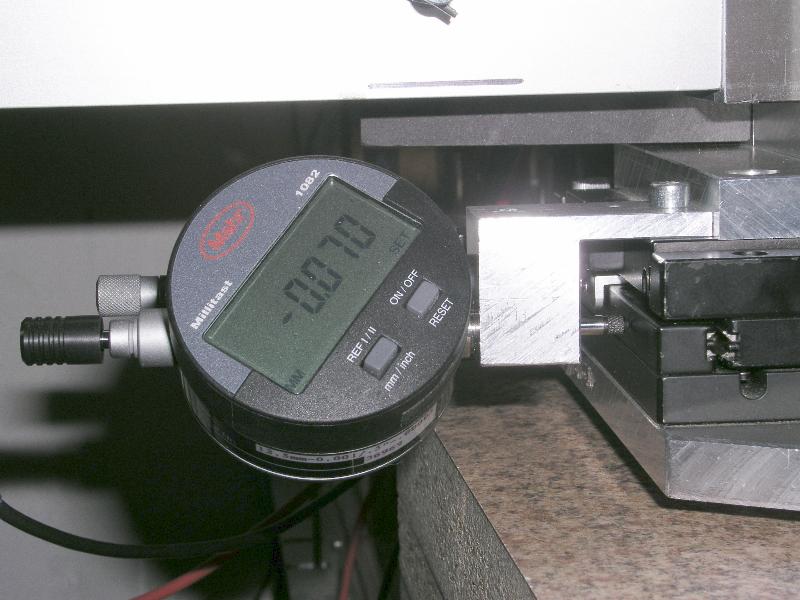
to get the index number of a refractor, you need two steps, as I described it here: http://www.astro-foren.de/showthread.php?t=7713
You get very exactly the focus difference of the different color focus, e-line = 0 in microns.
Then you have to calculate the deep sharpness of the objective: This is a rectangle of half of airy disk and
the relation of D/2 and the focus = 2*Lambda*K^2 ; (K=focus/D)
This formula you will find it again in the upper table.
Lets calculate it with the HAB 150/2250 invented from Wolfgang Busch, Ahrensburg in the seventieth of the last
century. http://rohr.aiax.de/suw-1977-10-A.jpg; http://rohr.aiax.de/suw-1977-10-B.jpg
The distance e-line to F/C is 2250*0.0002=0.45 and you can calculate this middle arithmetic value: W=1.8323
It means, the focal differenz between green and red/blue is 1.8323 times the deep sharpness of 0.2457.
I just phoned with Wolfgang Busch: The values of 0.45 mm difference e to F/C he got them by the Foucault
Testing. And this value is much better than the Zeiss AS Objektiv: http://www.astro-foren.de/showthread.php?p=30130#post30130
For measuring the secondary spectrum there are two ways:
one way is to compare the power in the 0.707 zone as Thomas Back tells us in his quote
another way is, to get the exact color focus values and compare it with the deep sharpness:
An apochromat is between 0 and 1 of the deep sharpness, a half APO between 1-2 as the Busch HAB shows,
and more than 2 its an Achromat. Thats all !
###################################################################################
Dear Andrey,
look here: http://www.astro-foren.de/showthread.php?t=7713
I use this interferometer with normal light from a car bulb
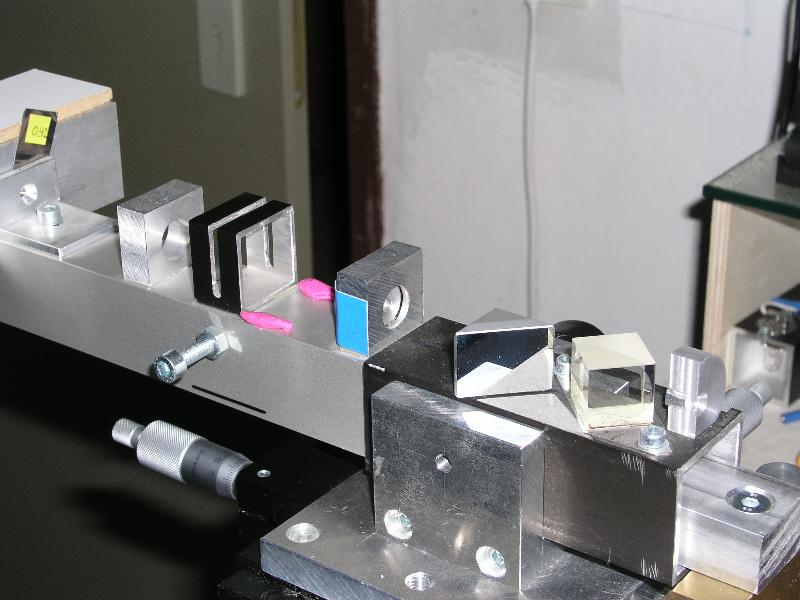
and insert these interference filters from Melles Griot as the foto shows
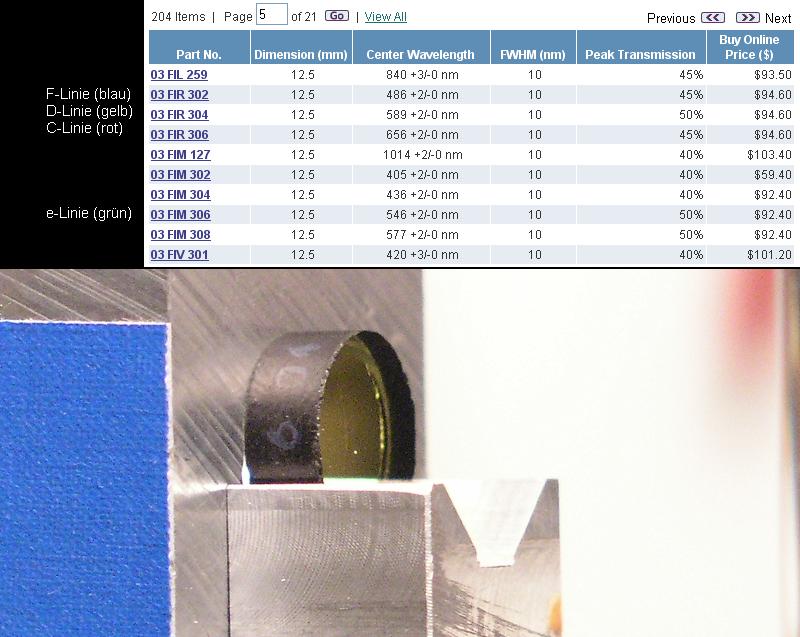
then I measure the focus differences of the different colors spectral lines: (F-, e-, d-, C- Line) with Digital Dial Gauge
on the next foto, it gets results in microns of mm.
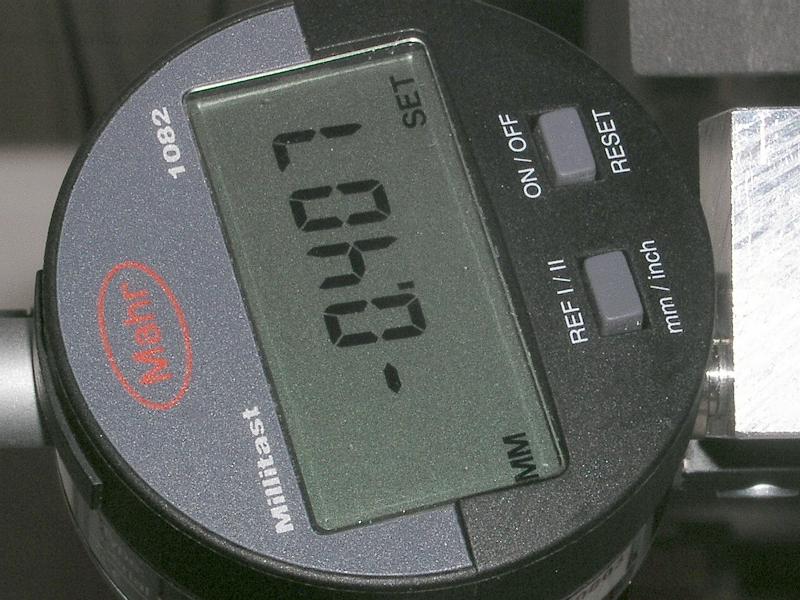
On the basic focus of the e-Line I calculate the deep of sharpness with the airy disc - this would be the unit. And with
this unit (Wert für Schärfen-Tiefe, next foto) I compare the differences to red and blue and Ill get an index number.
Between {0 < X < 1} equals APO {1 < X < 2} equals half APO ; more than 2 are the achromatic refractors.
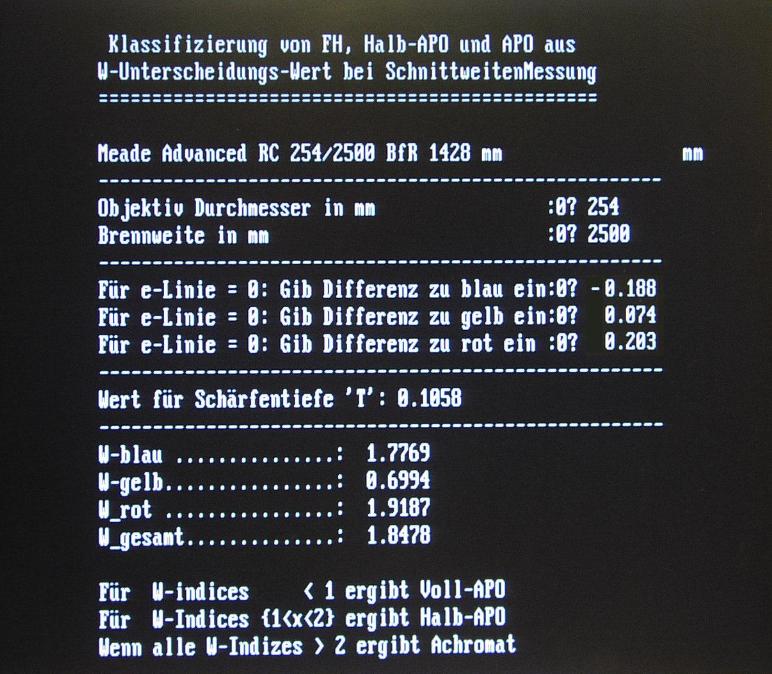
Its important, to test with the fringes in 0.707 zone. So you have a sharp criterion to define refractors by the
secondary spectrum. Thats all.
######################################################################################
Lieber Richard,
nachdem ich ja weiß, welch tolle Montierungen Du bauen kannst, freut es mich auch besonders, daß Dein "Equippement" nun komplett ist. Der 600-er Newton von Wolfram ist mit Sicherheit große Klasse.
Die Frage der Farbreinheit hat sehr viel mit dem Öffnungsverhältnis zu tun. Je kleiner dieses Verhältnis, umso unkritischer der Farblängsfehler, weil er in der Schärfentiefe verschwindet. Die Schärfentiefe ermittelt sich aus dem Airy-Scheibchen-Durchmesser und dem Öffnungsverhältnis des Refraktors. Und mit 110/1500 oder f/13.6 "verschwindet" die Farbe sehr viel eher, als bei den "APOs" mit großer Öffnung von f/7. Das läßt sich auch sehr schön beim Zeiss AS 150/2250 feststellen, das f/15 hat, und damit in etwa der Farbreinheit eines als APO deklarierten Scopos entspricht. Wobei Zeiss trickreich das blaue Spektrum hinter rot legt und damit ein etwas farbreinerer Eindruck entsteht. Beim Scopos hingegen liegt rot sehr weit hinten, und wird dadurch gut wahrgenommen. Ich vermute sogar, daß die Lage der Farben beim AS-Objektiv dem Dieter Lichtenknecker nicht unbekannt war, und Dein FH-Objektiv eine ähnliche Lage beim sekundären Spektrum hat, wie das Zeiss AS.
Schärfentiefe Zeiss..........: 0.2457 mm f/15
Scopos #1..i.................. : 0.0535 mm f/7
Dein LKnecker FH.............: 0.2034 mm F/13.6
